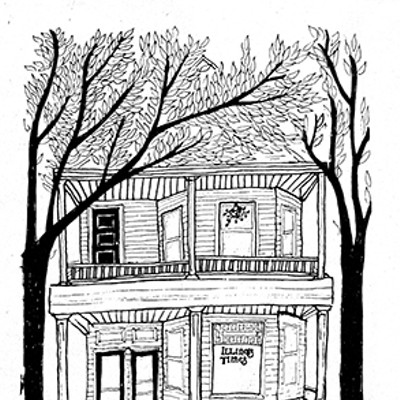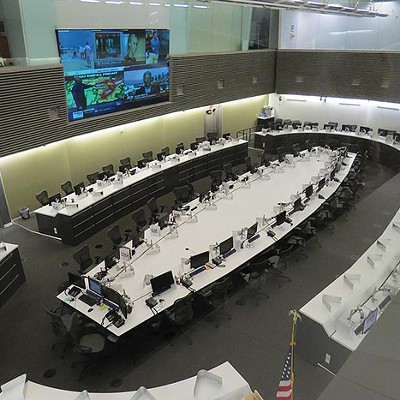Daydreaming the other day, I ran through my head some scenes from my imagined movie remake, Mr. Potter Goes to Springfield, in which Capra’s naïve do-gooder Jefferson Smith is replaced by Henry F. Potter from It’s a Wonderful Life. However, our own Mr. Potter, Bruce Rauner, also brings to mind real people from our own past. I refer to that great reform era from the 1880s until 1920 or so when “progressives,” including utopians, radicals and reformers as different as Teddy Roosevelt and Jane Addams, sought to redeem popular government in America. Rauner’s political roots are not in the social progressivism of a Gov. Edward Dunne, but the government progressivism espoused by what used to be known as the civic-minded business community – that is to say, of our Gov. Frank Lowden, the patron saint of such organizations as the Civic Committee of the Commercial Club in Chicago.
Progressive reformers of this type were less interested in saving government for the people than saving it from the people. They were moved to act when massive immigration began to flood Illinois cities with dangerous Italians and Lithuanians and Poles and Russians. Along with the Germans and Irish already here, these newcomers traded the votes that sustained the political machines through the intercession of ward committeemen who provided them in turn with jobs and favors. The WASPs thus lost their hold on the Statehouse and on city halls, and it was the corporate elites’ loss of control to the Other that drove “reform.” They wanted their government back.
This summary of their agenda by historian scholar Maureen A. Flanagan from the Encyclopedia of Chicago will do as well as any:
Business and professional men, supported by the Republican Party, stressed that all municipal reform should bring expertise and fiscal efficiency into government. They . . . opposed municipal ownership and control of public utilities, sought business control of the public schools, and wanted to exploit the economic possibilities of the lakefront. They demanded an end to patronage politics [and] the election of professional experts rather than party politicians to public office . . . .
That same program also was applied to the State of Illinois and the General Assembly. Civil service, for example, was the mother of all merit hiring schemes. This reform demanded proof of competence via written exams, which was and remains a wonderfully efficient way to filter out people who never learned to read or write, or could not yet do so in English.
Certainly, Illinois government needed to be made more modern, more efficient and more honest. Patronage, for example, was better suited to running a party than a public agency. (AFSCME, remember, was organized initially to protect public employees from losing their jobs at every election because of patronage house-cleanings.) These progressives thus determined to destroy the synergy – jobs for the immigrant, votes for the politicians – that sustained the coalition between ward and immigrant. Today, in place of “immigrants,” substitute “public sector employees.” (The fact that the membership of public sector union members is mostly black or brown is not irrelevant.)
The City of Springfield lived through its own episode of Raunerism at the turn of the 20th century. City politics had long been dominated by business and property elites but by the latter 1800s the “ethnic wards” sustained a succession of local machines. The real power behind the machine aldermen was the saloon interest; getting the saloon-keepers out of government was pursued with the same zeal (and rather more competence) being shown by Rauner in getting the unions out of government.
A successful referendum in 1911, backed by a public tired of paying some city workers to lean on shovels all day, fundamentally revised city government. To get rid of corruption among aldermen, the reform got rid of the aldermen by abolishing the wards they represented and replacing them with a city council comprising five commissioners elected at large. Civil service was instituted to base hiring on merit, and elections were put on a nonpartisan basis. While Springfield city government was radically reformed in 1911 it was only slightly improved. The business elite wanted their government run like they ran their businesses, but few of them wanted to be the businessmen who actually ran it, and the professional politicians quickly resumed control.
The larger progressive government revolution also largely failed at the state level (although the Lowden administration did impose a modern management structure on state departments). Every generation needs a governor who can bring state government up to date. Lowden did it 100 years ago, Dick Ogilvie had to do it again nearly 50 years ago. It is never easy. The reforms of both Lowden and Ogilvie required not only adroit politicking but a new state constitution; Ogilvie got his, Lowden tried to but could not. Today it’s Rauner’s turn. His agenda, shorn of his obsessive anti-unionism, has much to recommend it. His first year in office suggests that, unfortunately, the man does not.
Contact James Krohe Jr. at [email protected].






















